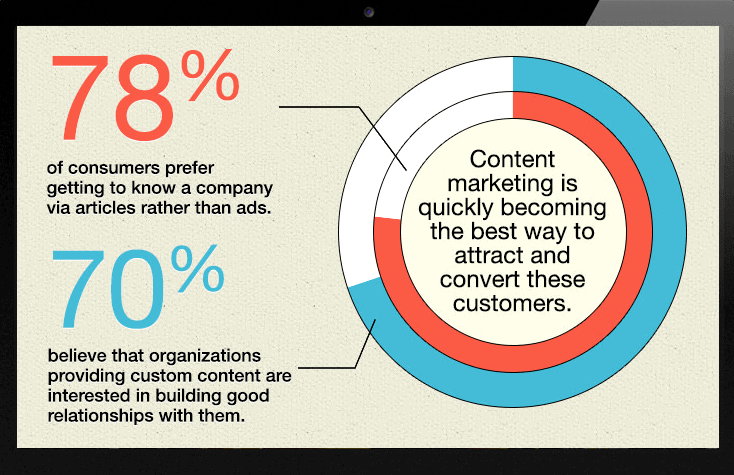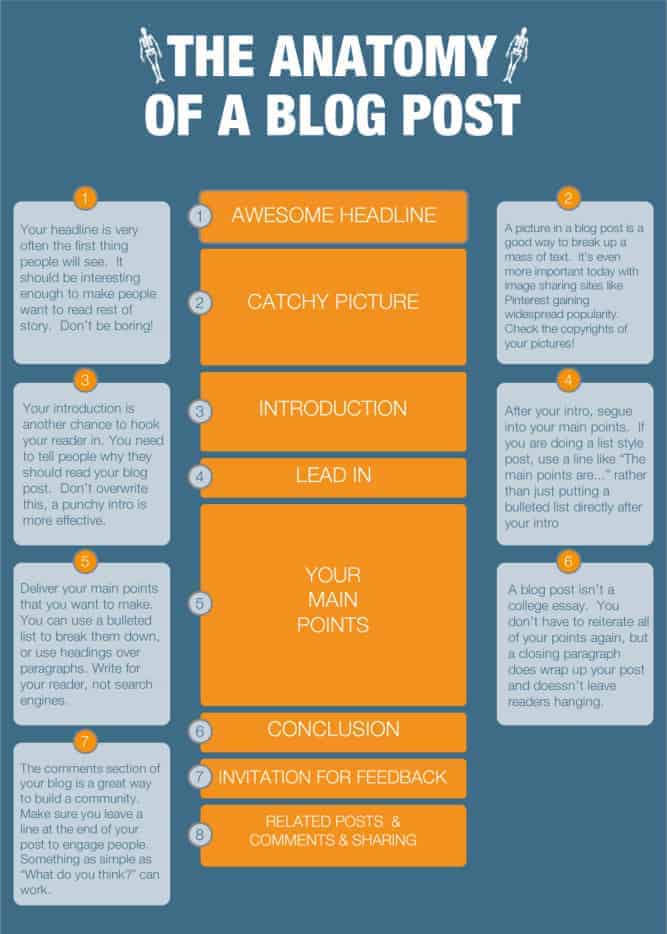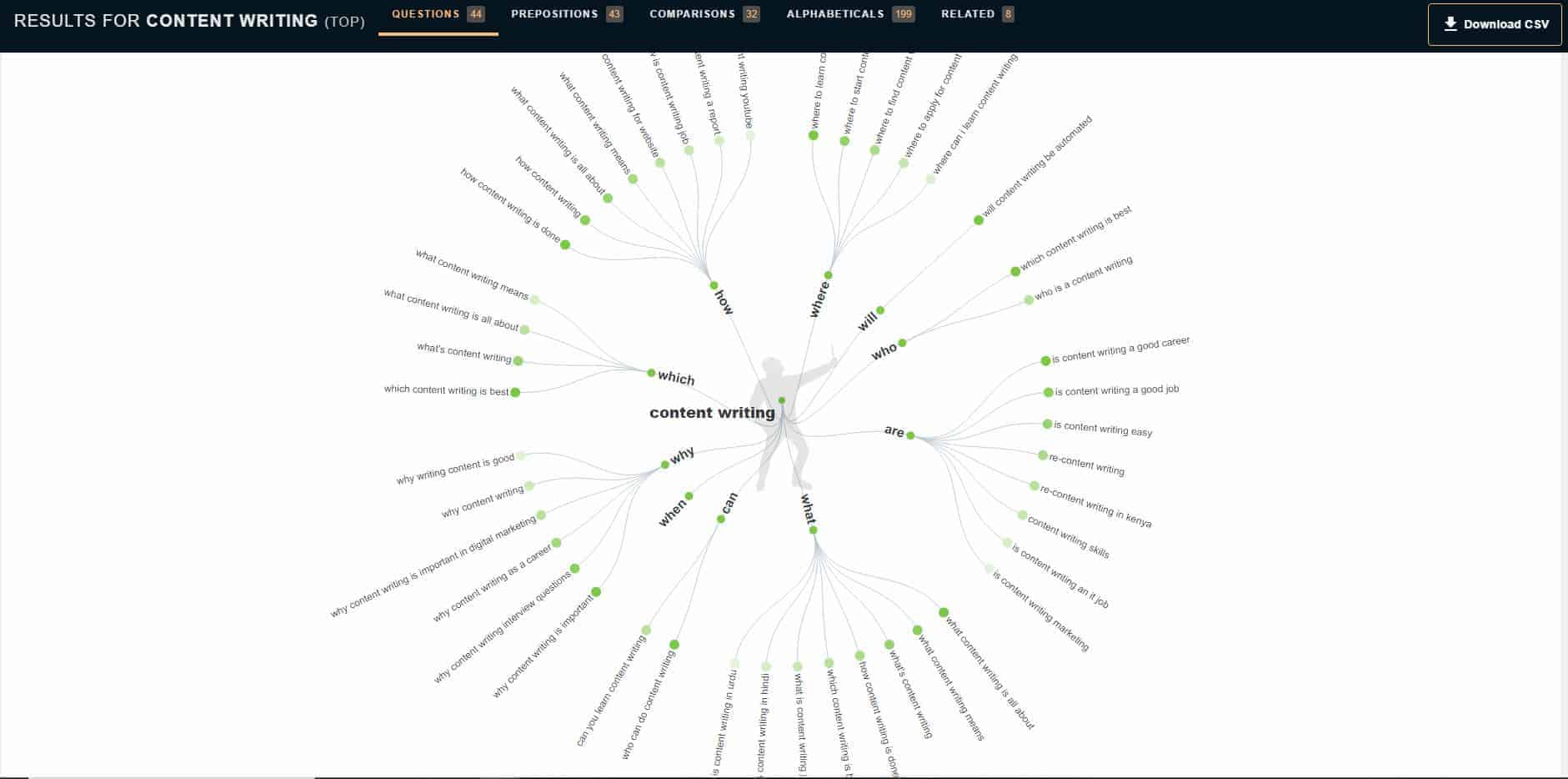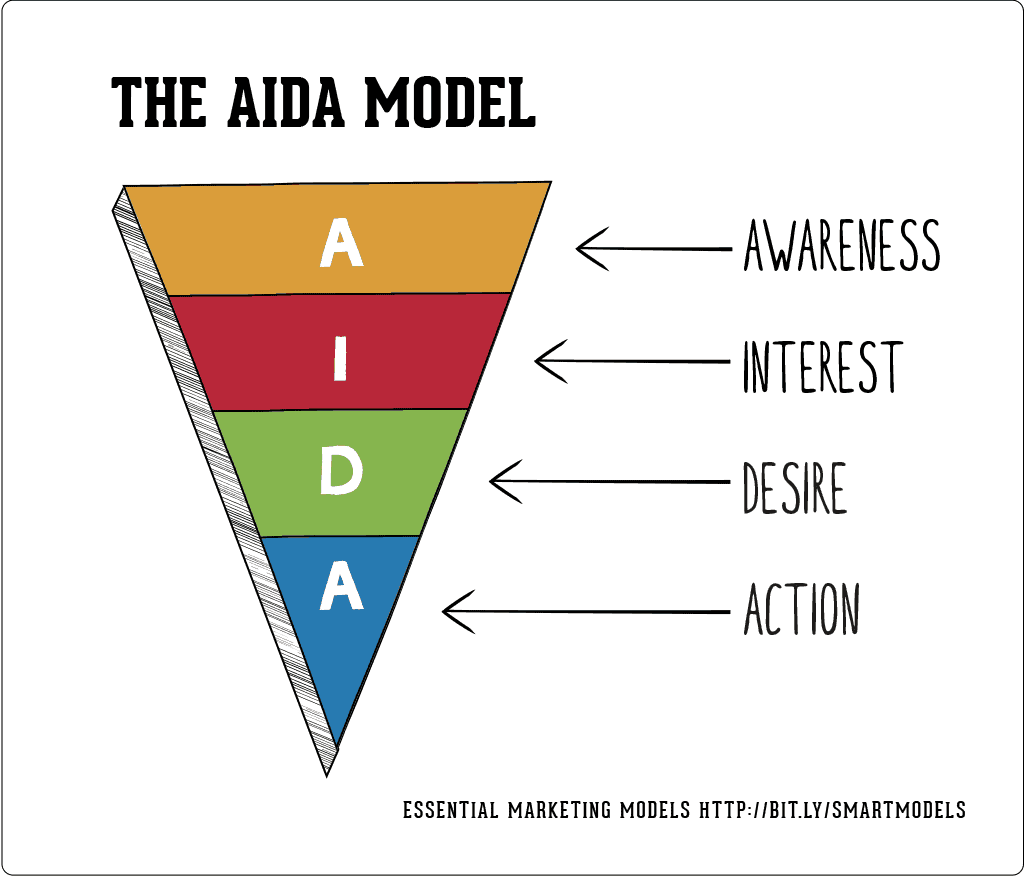
How To Write Effective SEO Content

Good SEO content is the backbone of any content marketing strategy. Great content can improve your visibility in searches, generate leads, build your brand and help you form lasting relationships with customers. Learning how to write SEO content is essential.
However, how do you write effective SEO content? Simply churning out content is not enough. If content marketing was that simple, everyone would excel at it — and if everyone excelled at it, no one would benefit from it. So, what separates the good SEO content from the great? Quite a few things, actually.
What Is SEO Content?
In the most basic sense, SEO content is designed to rank in the search engines. Though any type of content can be SEO content — think blog posts, landing pages, static website pages, e-books and even videos — not all content is SEO content. This kind of writing is designed specifically to help visitors find your website.

Think about how you conduct a search … First, you type in a specific term, word or phrase. Google will then deliver hundreds, thousands, and even millions of results.
However, it is unlikely that you’ll get through even 20 of those results. In fact, most people only ever make it through the first page (which equates to 10 results). If they don’t find what they’re looking for there, they’ll typically rephrase their inquiry. That’s why learning how to write SEO content that people find is vital to performing well online.
SEO helps Google deliver the best possible customer service to searchers. Though the search engine uses several different factors to determine rank, content relevancy carries the most weight. SEO content is all about creating the kind of content that will be picked up by Google and delivered to interested viewers.
So how does Google determine which content is relevant and which is not so much? That’s one of the questions we hope to answer here today. Ultimately, the best way to write SEO content is by using excellent content writing. Now is the time to get the most out of your SEO content.
Why Should You Care About Writing SEO Content?
Once upon a time, writing content was a way for businesses to set themselves apart from the competition. Today, however, content is a crucial element of any successful digital marketing strategy. You can take our word for it, or you can just look at the numbers:

Image from https://www.lyfemarketing.com/blog/why-is-content-marketing-important/
- 78% of consumers say they prefer to get to know a brand through content rather than paid advertisements.
- 70% of consumers believe that brands that regularly publish relevant content are interested in forming authentic relationships with them.
- More than 75% of internet users say they regularly read blogs, though 43% admit to skimming articles (the reason why lists, headers and bullet points are key).
- Content marketing gets three times more leads than paid advertising.
- Marketers who prioritize blogging are 13 times more likely to see a positive ROI than those who put content writing on the back burner.
Leads and sales are just the tip of the iceberg, though. If converting leads into paying customers was all SEO content could do for you, you may as well pay for pay-per-click ads or social media advertising.
What sets content marketing apart from standard marketing is its ability to work for you long after its publication date. That means you need to know how to write effective SEO content that stays evergreen.
How To Write Effective SEO Content
Not just any old blog post or landing page can help you realize the benefits mentioned above. To rank in Google, Yahoo and Bing, you need to write blog content that appeals to both your audience and the search engine spiders.

Though every marketer has his or her own step-by-step content marketing strategy, some elements are more common across the board than others. Here are seven steps you can take that will help you write effective SEO content:
- Understand Blog Post Anatomy
- Do Extensive Research
- Create Practicality and Relevance (i.e., value)
- Do On-page SEO
- Include Visual Appeal and Format
- Write a Meta Title and Description
- Use Content Writing Services
We’ll go into depth with each piece of advice explaining why and how you should incorporate these into your SEO content.
1. Understand the Anatomy of a Great Blog Post
Think of a successful blog post as you would a successful business endeavor — it’s backed by a deliberate and proven strategy. When studying how to write good SEO content, notice that though the content of each blog will vary, each should follow the same structure. (This structure has been generously provided by Neil Patel.)
Headline
Your headline is the first thing people will see, both in the search results and on your page. Make sure it’s click-worthy, meaning it’s interesting enough to make people want to see what you have to say.
It’s tough to write good SEO content, but then to have it overlooked because of a poor headline. In fact, you may have great content out there currently marred by bad headlines. It may be time for a content audit… 🙂
Visual
Knowing how to write SEO content includes knowing how to add visual aspects to each piece of writing. A stunning visual is a great way to capture readers’ interest and set the stage for what’s to come. It also breaks up big blocks of text, which can appear daunting to some.
Most importantly, images add to your on-page SEO and are shareable across image-sharing sites, such as Pinterest. You can add SEO keywords in image alt-text, improving your ability to be found by search engines.

Introduction
The headline encourages people to click on your article. The introduction, however, convinces them to stay and keep reading. When writing your SEO content, write a few compelling paragraphs that encourage readers to learn more.
Don’t try to tell your whole story in the intro, as this will overwhelm visitors. Rather, make sure the intro to each content writing piece is short, sweet and to the point.
Lead In
Intros should always conclude with a lead into the main points. When you’re first learning how to write SEO content, it may seem repetitive to have a lead in. However, if you just jump right in without creating some context or explaining that you’re about to jump in, you may confuse your audience.
A decent lead in can be something simple and straightforward, such as, “The main points are,” while a strong lead in many read something like, “We’ve compiled a list of the top tips for creating content that ranks.”
Your Main Points
This is the nitty-gritty of your article, the section in which you can let loose and speak on the given topic without reserve. The more info you can share on a topic, the better. However, stay organized.
Use headers, paragraphs, numbered lists and bullet points to break your website content into subtopics. Write in a clear, concise and engaging manner. Write to inform, not to impress the search engines (the latter will happen naturally if you can accomplish the former).
Conclusion
Your blog post is not a college essay, so no need to reiterate every point you covered. However, it’s always nice to wrap up your post with a brief closing paragraph. A strong goodbye will prevent readers from feeling as if you left them hanging.
Invitation for Engagement
It’s common practice to encourage readers to contact you, comment, ask questions or leave their two cents. This call to action (CTA) creates an opportunity for engagement with your content with little extra effort on your part. Knowing how to write an effective CTA is a great skill for your SEO writing.

Image from https://neilpatel.com/blog/the-ultimate-guide-to-writing-blog-posts-that-rank-in-googles-top-10/
2. Great SEO Content Requires Research
Now that we’ve gone over the basic skeleton of great content, let’s get into how you write the meat of it. When it comes to learning how to write SEO content, there are three stages of research you should conduct: topic research, search intent research and keyword research.
Topic Research
Sometimes, topics will just come to you, in which case, you can skip this step. In many other situations, however, you may find yourself hard-pressed for things to write about. How do you write SEO content without a topic? In these instances, you may need to turn to Google.
Writing for the sake of writing won’t do you any good. You need to find a relevant topic with “traffic potential.” Begin by thinking of broad topics your customers want to learn more about.
For instance, say you sell LED lightbulbs online. Don’t write about the bulbs themselves, as that would be a snooze fest. Instead, write about energy saving tips, how homeowners can decorate with LED Edison bulbs or how creatives can use LED bulbs in their next craft projects.
Depending on your industry and what you sell, you may have to get more creative than others when writing good SEO content. However, a great way to find topics is to think of your customers’ frequently asked questions, their pain points and ways in which they might use your products or services.
There are also TONS of topic creation tools online to help you find a great topic. One that we love to use is answerthepublic.com, where you can get an ideation wheel of different search queries involving that topic.

You’ll also definitely want to have your topics based in keyword research so you’re maximizing your potential when writing articles, blogs or any other type of content. We’ll get to that in just a minute.
Search Intent
When it comes to writing SEO content, search intent is key. If your content doesn’t align with searchers’ intent, it won’t perform well.
So, how can you identify intent? Take clues from the top-ranking results by analyzing the three Cs of search intent:
- Content Type: When you type in your given topic, what type of content fills the first page of results? Is it blog posts, product descriptions, category pages or something else? Align your topic with your findings.
- Content Format: Next, determine what type of posts rank. Are they listicles, opinion pieces, news articles or how-tos?
- Content Angle: Finally, decide on an angle. Who is conducting the search? What do they value? Do they want a quick fix or something more elaborate? For instance, are people searching for LED lightbulbs because they want to save money, or do they want to redecorate using high-end bulbs that cast a warm ambiance?
Keyword Research
Finally, conduct keyword research. This will help you learn how to write SEO content that can be ranked for high-volume keywords. Some marketers use this as the first phase of research in their content writing and let the results dictate the topic. You, however, may decide to base your topic off your marketing goals (to sell more LED light bulbs) and choose popular keywords based on it. Either method works.
There are dozens of free keyword planning tools you can use, including Google AdWords Keywords Planner.
These tools not only tell you what your target audience is searching for but also what their intent is — i.e., comparison shopping, just browsing or ready to purchase.
3. The Best SEO Content Has Useful and Practical Value
Great content delivers value to your audience and inspires them. Audiences these days aren’t just looking for answers to their questions but rather a nudge to get them to act on an idea or impulse that they’ve been harboring for a while.
So how do you write good SEO content with that appeal in mind? A great way to deliver value to your audience is by using the AIDA model of marketing: Attention (or Awareness), Interest, Desire, Action. In terms of content marketing, the AIDA model might go something like this:

Image from https://neilpatel.com/blog/the-ultimate-guide-to-writing-blog-posts-that-rank-in-googles-top-10/
Attention
Grab your audience’s attention with an engaging article headline that promises to solve a problem or answer a question. The headline is so crucial that it dictates nearly 75% of consumers’ buying decisions.
The headline of your content is so critical that it dictates nearly 75% of consumers' buying decisions. 🛒 #ContentMarketing #SmallBusiness Share on XSuccessful headlines, like blog posts themselves, use proven elements. The top five are as follows:
- Numbers: Headlines with numbers generate 36% more engagement than those without. Odd numbers are particularly effective.
- Addressing the Reader: Addressing the reader by using “you” generates 21% more clicks than other types of headlines.
- How To: How-to article content sees 17% more clicks than other types of content.
- Normal: Standard headlines without numbers, the use of “you” or questions get 15% more clicks than other headline formulas.
- Questions: Headlines that pose questions generate 11% more clicks than non-question headlines.
Interest
Once you attract a reader with these SEO writing best practices, you need to hold his or her interest. Build readers’ interest immediately after they click on your article via a secondary headline. Continue to build interest throughout the page with subheadings that also drive home the benefits of reading your content.
Desire
You can build desire with your SEO content by using bullet points, which are a copywriter’s best friend when it comes to building search engine rankings. In fact, you may notice that any type of persuasive copy — whether in print or on the web — will contain bullet points.
Bear in mind that bullet points are only effective in moderation. Use them sparingly and limit the number of bullets in a list, so you don’t overwhelm the reader.
Bullet points also make your content more scannable, which is crucial for web writing. If you’re discussing a complicated topic, bullet points can make your content more easily digestible and understandable.
Action
Finally, conclude your SEO article with a call to action. The CTA tells the reader of your article which action to take next. Your CTA may vary from content type to content type.
For instance, your product pages may have a more straightforward CTA, such as “Order Now,” whereas your blog posts may end with a soft call to action, such as “Sign up for our email newsletter to get more product information and discounts.”
Whatever CTA you choose to use, note that readers want to take action. That’s why they’re on your site in the first place. Don’t disappoint them, instead use what you know about how to write SEO content, and find a way for them to engage further with your brand.
4. Use SEO Practices When Writing Your SEO Content
The purpose of writing SEO content is to increase your presence in organic search. One way you can do this is by performing on-page SEO.
On-page SEO is the process of optimizing your content for maximum efficacy and improving the user experience.
If the user is happy, the search bots are happy, which means you’re happy. When writing SEO content articles, five elements carry considerable weight:
- Use and repetition of the primary keyword (40%)
- User experience (30%)
- Depth and value of content (15%)
- Use of related keywords (7.5%)
- Theme of page/topic (7.5%)
Use tips one through three to satisfy the final four elements. For this section, we will focus on keyword usage.
How To Use Keywords in Online SEO Content
Keyword best practices dictate that you use your primary keyword naturally throughout your blog post or webpage. If you’re doing that, you should be fine.
However, if you overuse your primary keyword, Google might penalize you for “keyword stuffing.” A penalty could mean your page falls to the bottom of the search results, thereby undoing all of your hard work.
Moral of the story: Don’t overuse your keywords!
So, what does natural usage of keywords look like? How do you write good SEO content without going overboard with optimization? You should use keywords in your content in the six main elements of your page:
- Title
- Subheadings
- Content of page
- Meta title
- Meta description
- URL
- Image alt text
Keyword usage shouldn’t disrupt the flow of your article writing or make your reader go, “What?” Ideally, the keyword should flow naturally from your fingertips when typing out a thought.
Using the keyword in other on-page elements, such as your meta title, meta tag, URL and image alt tags simply serve to help the search engines categorize your page.
These elements help to clearly communicate your topic to Google and your audience without either having to perform a thorough audit or read of your page.
The bottom line is, optimize your page within reason and with your audience in mind. Your job is to answer users’ questions and solve their problems. Obtaining rankings in Google is just an added benefit.
5. Make Your SEO Content Visually Appealing
A part of knowing how to write SEO content is to think not just about the text, but what the entire article looks like. Go through your article, landing page, blog post or website and break up the content into readable sections. Depending on your writing style, this may be something you do as you write SEO content, or it may be something you save for after you get your thoughts on the page.
We’ve already discussed using short paragraphs, subheadings, numbers and bullet lists, so let’s talk about images.
Webpages and blog posts with visuals garner 94% more page views than those without.
Images effectively do three things: They make your content skimmable, they make it more visually appealing and they help to explain complex subject matter.
The human brain processes images 60,000 times faster than it does text, which may explain why webpages with visuals get so much more attention than webpages that don’t use them!

Image from https://www.business2community.com/digital-marketing/visual-marketing-pictures-worth-60000-words-01126256
Including visuals of any kind in your SEO blog content — such as standard photos, videos, infographics and graphs — can drastically increase readability of your article writing, improve reader satisfaction and, ultimately, make Google happy. All this leads to one thing: increased rankings.
6. Create a Compelling Meta Title and Meta Description
We already discussed the importance of meta tags and descriptions when writing articles in tip #4 (they help Google index your page and briefly tell audiences what your page is about). However, for a meta description and title tag to be effective, they need to contain more than just a string of keywords.
Both of these elements serve as your sales pitch to readers and should tell them precisely why they should click on your page.
The meta title and meta description are two elements in which your research from step two will come in handy, particularly your findings regarding searcher intent.
Whatever your searchers value — affordability, ease, convenience, fast results, savings, etc. — pitch it in your meta and title tags when writing SEO content articles. In doing so, you can entice clicks to your page, and more traffic almost always equates to increased rankings.
However, do not be deceptive in your page descriptions. Learning how to write SEO content requires both honesty and integrity from you and your company. Being deceptive in your descriptions can backfire. If your promises prove false, visitors will quickly click away. This will increase your bounce rate, and a high bounce rate is bad for your rankings.
Optimal Title Tag Format
Creating an effective title tag doesn’t require much creativity. The optimal title tag format is as follows:
Primary Keyword – Secondary Keyword | Brand Name
However, some brands like to change it up and use the title tag as another opportunity to garner attention. Those brands use this format:
Alternate Title Using Primary Keyword | Brand Name
Whichever format you choose to use when writing content, note that title tags should not exceed 60 characters. Ideally, you should keep your title tag between 50 and 60 characters.
Optimal Meta Description Format
Creating a meta description requires a little bit more creativity than writing a title tag. The meta description should tell searchers what your page is about in an enticing way. This is a creative content writing example that has direct SEO and reader implications.
It should not exceed 160 characters, though it can be as short as 50 characters. You should use the primary keyword once and, if it fits in naturally, a secondary keyword.
Many brands like to use action verbs at the start of their meta descriptions, such as “learn about” or “read.” However, the ultimate goal is to create a readable, compelling description of what’s beyond the link, so don’t stress too much over format.

7. Invest in SEO Content Writing Services
If you read this (or skimmed it — we won’t be offended!) and thought to yourself, that is a lot of work for a single piece of content, you’re right, it is.
Web writing is an art form, and it requires considerable experience and strategy to know how to write good SEO articles. That’s why so many marketers outsource the actual writing portion to an SEO content writing services company.
Outsourcing content does not make a brand lazy or frivolous with its spending or whatever other stigma might be holding you back. In fact, successful brands know that by investing in SEO content services, they can count on receiving the copy they need to rank, all while being able to continue to direct their resources to other crucial business aspects.
Now That You Know How To Write SEO Content, Start Writing!
These SEO writing best practices can make the difference for your SEO content marketing strategy. Pay attention to the format of your articles and incorporate keywords, visuals and meta data. Remember that quality is an important factor for Google algorithms, so knowing how to write good SEO content relies on both value and optimization.
Don’t want to take the time and effort to create exceptional content? At BKA Content, we offer everything from a la carte content pieces to managed content writing services. We know how to write SEO content, and we’re willing to work with your needs. Whether you’re just testing the waters or are ready to begin a full-scale content marketing campaign, check out our content shop today!
- 7 Ways to Blog Faster and Better Without Losing Your Mind - December 16, 2023
- The Business of Blogging: How To Make Money With Profitable Posts - December 9, 2023
- How To Do YouTube Content Marketing - December 8, 2023


